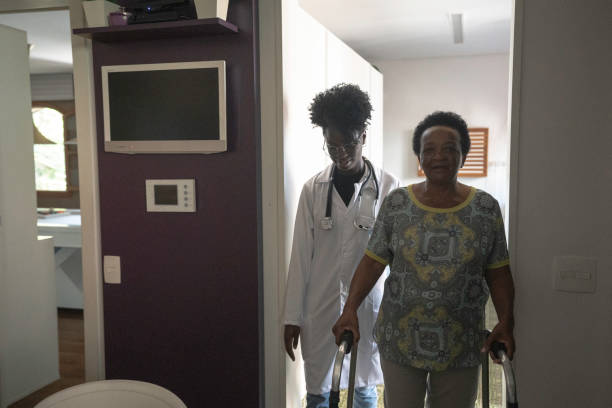Causes and Symptoms of Parkinson’s Disease
Parkinson’s disease is a progressive neurological disorder that affects movement. It primarily occurs due to the loss of dopamine-producing nerve cells in the brain. Dopamine is a neurotransmitter responsible for smooth and coordinated muscle movements. As its levels decrease, patients experience difficulty in controlling their body movements.
Parkinson’s disease mostly affects older adults, but early-onset Parkinson’s can occur in younger individuals. While there is no known cure, timely diagnosis and medical intervention can help manage symptoms effectively.
Causes of Parkinson’s Disease
The exact cause of Parkinson’s disease remains unclear. However, researchers have identified several risk factors that may contribute to its development.
1. Genetic Factors
To begin with, some cases of Parkinson’s are linked to inherited genetic mutations. If a family member has Parkinson’s, there may be an increased risk of developing the condition.
2. Environmental Triggers
In addition, exposure to toxins, pesticides, and heavy metals has been linked to a higher risk of Parkinson’s disease. Studies suggest that people living in rural areas or working with chemicals may be more susceptible. Causes and Symptoms of Parkinson’s Disease
3. Aging
Moreover, aging is the most significant risk factor. Most cases of Parkinson’s disease occur in people over the age of 60, although early-onset cases can appear before 50.
4. Brain Changes
Another contributing factor is the accumulation of abnormal protein deposits, called Lewy bodies, in brain cells. These deposits disrupt normal brain function, contributing to the condition.
5. Head Injuries
Lastly, repeated trauma to the head, such as concussions, may increase the likelihood of developing Parkinson’s later in life.
Symptoms of Parkinson’s Disease
Parkinson’s symptoms usually develop gradually and worsen over time. The main signs can be grouped into motor (movement-related) symptoms and non-motor symptoms.
Motor Symptoms
- Tremors – Uncontrollable shaking, often starting in the hands or fingers.
- Bradykinesia (Slowed Movements) – Difficulty in initiating or completing movements.
- Muscle Stiffness – Rigid muscles can cause pain and restrict motion.
- Postural Instability – Problems with balance and an increased risk of falling.
- Facial Masking – A reduced ability to show facial expressions.
Non-Motor Symptoms
- Sleep Disorders – Insomnia, restless legs syndrome, or frequent waking at night.
- Depression and Anxiety – Many Parkinson’s patients experience mood changes.
- Loss of Smell (Anosmia) – Often an early warning sign of Parkinson’s.
- Cognitive Decline – Memory loss and trouble with concentration may develop in later stages.
- Digestive Issues – Constipation and other gastrointestinal problems are common.
Stages of Parkinson’s Disease
Parkinson’s progresses through five stages, each with increasing severity.
Stage 1: Mild Symptoms
- Tremors and movement difficulties affect only one side of the body.
- Symptoms are mild and do not interfere with daily activities.
Stage 2: Worsening Symptoms
- Both sides of the body are affected.
- Walking and posture begin to change.
- Still able to live independently.
Stage 3: Moderate Symptoms
- Balance problems become more noticeable.
- Falls become more frequent.
- Daily tasks like dressing and eating become harder.
Stage 4: Severe Symptoms
- Movements slow significantly.
- Walking without assistance becomes difficult.
- Patients may need help with daily activities.
Stage 5: Advanced Stage
- Full-time assistance is required.
- Severe movement limitations, often leading to wheelchair dependence.
- Cognitive problems, including dementia, may develop.
Managing Parkinson’s Disease
While there is no cure, various treatment options can help improve quality of life. These include:
- Medications to increase dopamine levels.
- Physical therapy to maintain mobility and strength.
- Speech therapy to improve communication abilities.
- Surgical options, such as Deep Brain Stimulation (DBS), in advanced cases.
When to Seek Medical Help?
If you or a loved one notice early symptoms of Parkinson’s disease, it’s crucial to consult a doctor as soon as possible. Getting a diagnosis early can help in managing the disease more effectively. Causes and Symptoms of Parkinson’s Disease
For expert medical advice and personalized care, book an appointment with qualified doctors on Virtual Doctors App. You can also download the Virtual Doctors Healthplus App on Google Play for online consultations.
Parkinson’s disease is a progressive condition that affects movement, cognition, and overall well-being. While it cannot be cured, proper medical care and lifestyle changes can help patients manage their symptoms effectively. Therefore, if you suspect Parkinson’s, seek help from medical professionals at Virtual Doctors to receive expert guidance and treatment.
